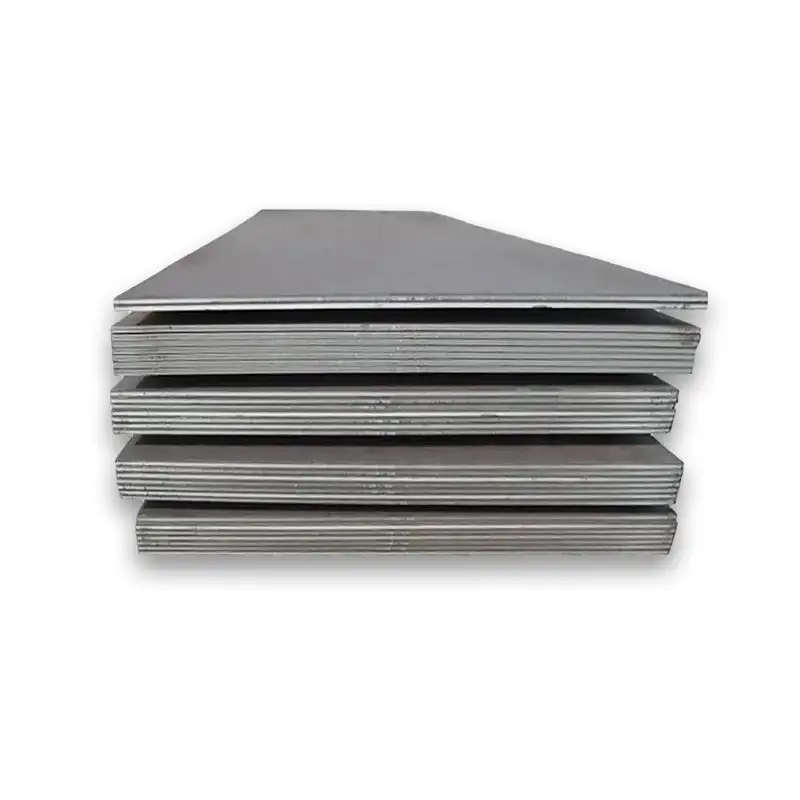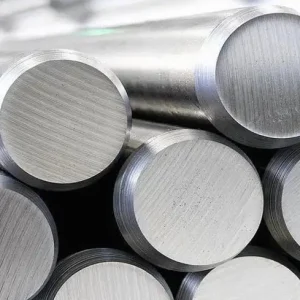ASTM A516 Grade 70 is the industry workhorse for welded pressure-vessel and boiler plates: it delivers the tensile and notch-toughness requirements needed for moderate- and lower-temperature service while remaining highly weldable and commercially available in a wide range of thicknesses. For procurement teams who need certified PVQ (pressure-vessel quality) plate with rapid delivery and factory pricing, MWAlloys supplies ASME/ASTM-certified A516 Grade 70 from Chinese mills at 100% factory prices with fast stock delivery and full material test certificates.
What is ASTM A516 Grade 70?
ASTM A516/A516M is the ASTM standard titled “Standard Specification for Pressure Vessel Plates, Carbon Steel, for Moderate- and Lower-Temperature Service.” Grade 70 is the highest strength grade in the A516 family (grades 55, 60, 65 and 70) and is specified where higher tensile strength and better notch toughness are needed for welded pressure vessels, boilers and heat-exchangers. The standard sets chemical limits, mechanical property requirements, maximum thickness rules and testing/inspection references.
Standards and regulatory context
-
ASTM A516/A516M defines the chemical and mechanical requirements and is the primary purchasing reference for PVQ plates in the U.S. market.
-
ASME uses ASTM material specifications in the Boiler & Pressure Vessel Code (BPVC) Section II, Part A; material designations with the prefix “SA” correspond to ASME adoption (ASME SA-516). Fabricators building to the ASME code will normally require SA-516 plates certified per BPVC requirements.
-
EN-equivalents: for European projects EN 10028-2 grades such as P355GH/P355NH are often used as the closest EN counterpart to A516 Grade 70 for pressure-vessel and boiler service (note: direct “equivalence” requires checking heat treatment and impact requirements for the intended temperature and thickness).
-
HIC / sour-service: for sour environments buyers sometimes request HIC-resistant A516 material or additional testing to NACE/AMPP TM0284. This is a separate acceptance/test requirement beyond the basic A516 spec.
Chemical composition
ASTM A516 specifies composition ranges and several elements may have thickness-dependent limits (especially carbon). The table below summarizes typical composition limits used by mills and distributors (presented for purchasing guidance; always confirm specific mill MTC values for each heat).
Typical chemical composition (wt. %)
| Element | Typical / limit (wt. %) | Notes |
|---|---|---|
| Carbon (C) | ≈ 0.10 – 0.31 (max depends on thickness) | Carbon maximum rises with plate thickness; refer to spec or mill MTC. |
| Manganese (Mn) | 0.85 – 1.20 | Common tight range for PVQ plate. |
| Silicon (Si) | 0.15 – 0.60 | Deoxidation control. |
| Phosphorus (P) | ≤ 0.025 – 0.035 | Low P required for toughness. |
| Sulfur (S) | ≤ 0.025 – 0.035 | Low S required for weldability and toughness. |
| Chromium (Cr) | ≤ ~0.30 | Often reported as allowable trace. |
| Copper / Nickel / Molybdenum / Niobium etc. | trace amounts to small fractions (Cu, Ni ≤ ~0.3; Mo ≤ 0.08; Nb ≈0.01) | Used to tailor properties; verify heat-by-heat. |
Important buying note: actual limits on a supplied plate appear on the mill test certificate (MTC). Carbon limits vary with thickness — for example, many mills publish C max values like 0.27% for ≤½″, rising slightly at larger thicknesses, so always match the quoted MTC to your design’s Charpy and toughness requirements.
Mechanical properties
The A516 family lists tensile strength ranges per grade; Grade 70 requires the higher range:
-
Tensile strength (ultimate): 70–90 ksi (485–620 MPa).
-
Yield strength (min): commonly reported about 38 ksi (~260 MPa), although designers use the exact values on the mill certificate.
-
Elongation: typical minimum elongation varies by specimen gauge (e.g., 17% in 200 mm gauge).
-
Impact (Charpy V-notch): when the purchaser specifies impact testing, A516 plates must meet the Charpy energy at the agreed temperature; for many pressure-vessel applications the plate is required to pass a −20 °F (−29 °C) Charpy average acceptance (verify project spec).
Manufacturing conditions and delivery states
-
As-rolled vs normalised: plates ≤1.5″ (≈40 mm) are commonly supplied as-rolled; plates thicker than 1.5″ are often required to be normalized to obtain required toughness. The ASTM/ASME rules define when normalization is mandatory.
-
HIC-resistant grades: for sour service some suppliers offer HIC-tested A516 material and will supply results per NACE TM0284 / AMPP guidance. Request specific HIC acceptance criteria (CLR/CSR/CTR) in purchase order.
-
Mill testing & traceability: PVQ plates should be supplied with EN10204-3.1/3.2 or equivalent MTC depending on end-user and code requirements (ASME will often require traceable MTCs and heat-lot identifiers).
Sizes, thickness and weight
Fabricators need quick weight references. A commonly used conversion is weight per square foot; MetalsDepot and other distributors publish these numbers for standard imperial thicknesses.
Quick weight table (imperial sizes, lb/ft²)
| Thickness (in) | Weight (lb/ft²) |
|---|---|
| 1/8" (0.125") | 7.67 |
| 3/16" (0.1875") | 10.21 |
| 3/8" (0.375") | 15.31 |
| 1/2" (0.5") | 20.42 |
| 3/4" (0.75") | 30.63 |
| 1" (1.0") | 40.84 |
| 1.5" (1.5") | 61.26 |
(Use exact density 490 lb/ft³ for steel if you need to recalc for metric units.)
Metric availability: mills commonly produce hot-rolled plates in widths from 1,220–4,200 mm and thickness ranges from 3 mm up to >150 mm depending on mill capability; check specific mill data for max thickness in grade 70.
Typical uses and engineering reasons to pick A516 Grade 70
-
Boilers and pressure vessels (most common): A516-70 combines strength and CVN toughness for moderate-/low-temperature service.
-
Storage tanks, heat exchangers and cryogenic tanks (when specified): the plate’s notch toughness can be tuned by impact testing and heat treatment.
-
Structural components under cyclic pressure or variable temperature: higher tensile and better notch resistance than lower grades make Grade 70 attractive.
-
Procurement advantage: widespread mill stock and many suppliers mean fast delivery and competitive pricing — important on tight schedules.
Welding, fabrication and inspection
-
Weldability: A516-70 is readily weldable by common methods (SMAW, GTAW, GMAW). Choose filler metals that match toughness requirements at the joint (consult AWS recommendations). Hobart and other weld suppliers publish filler choices for SA516-70.
-
Preheat / PWHT: preheat may be recommended on thick sections or when carbon equivalents rise; PWHT is normally only applied if project spec or code requires it. Normalization is required for plates thicker than specified limits per ASME/ASTM.
-
Non-destructive testing (NDE): radiography, ultrasonic (UT) and ultrasonic HIC screening are commonly requested. Specify acceptance levels and reference standards (ASME/NDE practice).
2025 price comparison — USA / Europe / China
Steel plate markets fluctuate. Below are representative, market-level price ranges and procurement notes for 2025 based on distributor and market reports (use these as ballpark guidance; obtain live quotes and confirm incoterms and processing charges).
Price ranges (2025)
-
United States (domestic distributor, cut-to-size, A516-70 PVQ): ≈ USD $900 – $1,800 / tonne (retail/distributor levels vary widely with size, plate processing and location). Distributors commonly price by CWT or per cut-piece; finished, cut and shipped quantities increase total cost.
-
Europe (EXW/producer plate): market price for heavy hot-rolled plate (8–40 mm) in mid-2025 ranged approximately €590 – €670 / tonne for domestic hot-rolled plate (non-PVQ baseline); PVQ A516-equivalent plate will be higher after testing and certificates are included — expect roughly €650 – €1,200 / tonne depending on spec and supply. (Fastmarkets/MEPS reporting).
-
China (FOB/EXW Chinese mills / trading platforms): wide ranges are observed on trading portals; approx. USD $450 – $1,200 / tonne depending on quantity, thickness, certification needs and finish (many listings around $500–$900/ton). Small MOQ orders, testing, and cut-to-size increase final price.
Why ranges are wide
-
PVQ (pressure-vessel quality) material with certified MTCs, HIC testing, normalization and traceability costs more than generic hot-rolled plate.
-
Logistics, ocean freight and duties can move landed costs substantially. For example, a China FOB price may look low but landed cost after shipping, import clearances and processing often places total delivered price closer to local market levels.
Practical buying tips
-
Ask for explicit MTC and ASME/ASTM references on quotes.
-
For code work (ASME), insist on SA-516 marking and traceable heat numbers.
-
If sour service is possible, request HIC or NACE/AMPP testing and HIC acceptance numbers.
Procurement checklist
-
ASTM A516/A516M (state edition year) and ASME SA516 where code applies.
-
Mill heat number and full EN 10204 MTC (3.1 / 3.2 as required).
-
Delivery condition (as-rolled, +N normalized if required for thickness).
-
Charpy V-notch test temperature and acceptance value if low-temperature service is in scope.
-
HIC / NACE TM0284 testing if sour service risk exists.
-
Ultrasonic inspection or radiography requirement (if requested).
-
Plate dimensions tolerance, thickness tolerances and flatness per ASTM/ASME references.
FAQs
1. Is A516 Grade 70 the same as ASME SA516 Grade 70?
Yes, ASME SA516 is the ASME designation for the ASTM A516 specification adopted in the ASME BPVC; code users will normally ask for SA516/SA516M.
2. What European steel is equivalent to A516-70?
Common equivalents include EN10028-2 grades such as P355GH / P355NH for many pressure vessel uses, but equivalence is conditional on heat treatment and impact requirements. Always verify mechanical/impact curves for your thickness and temperature.
3. What thicknesses are available for A516-70?
Mills produce a wide range — typical commercial availability spans from a few millimeters up to >150 mm depending on mill; normalization rules apply above ~40 mm in many practices. Confirm with supplier.
4. Does A516-70 need post-weld heat treatment (PWHT)?
PWHT is not mandatory solely because the plate is A516-70; PWHT depends on joint design, service temperature, material thickness and code requirements. Normalization (a mill heat treatment) is often required for thicker plates.
5. Can A516-70 be used at low (sub-zero) temperatures?
Yes, if Charpy impact testing at the target temperature is specified and the material passes. Always require the Charpy acceptance temperature on the MTC if sub-ambient service is planned.
6. Is A516-70 weldable to common structural steels?
Yes. Use appropriate filler metals to meet toughness criteria. Avoid excessive dilution and follow industry welding guidelines.
7. What tests should I ask for on an A516-70 plate delivery?
Minimum: chemical analysis, tensile test, Charpy if required, certificate of conformity, and heat number traceability. Add HIC/NDE for sour or critical service.
8. How do I convert plate thickness to weight for logistics?
Use standard weight tables or the steel density (≈490 lb/ft³). Distributors publish quick lb/ft² values for common imperial thicknesses.
9. Where can I source A516-70 at factory prices with quick delivery?
Large Chinese mills and trading houses commonly stock A516-70 and can supply factory FOB/EXW pricing at competitive rates; for code work insist on certificate authenticity and independent testing when needed. MWAlloys provides direct factory pricing, rapid stock delivery and certificate support from China.
10. How much extra does PVQ testing/certification add to price?
PVQ and third-party testing add handling and reporting costs — the delta varies by market and test scope. Expect PVQ certified plate to cost more than commodity hot-rolled plate; request itemized quotes for testing, traceability and mill processing to compare offers fairly.





